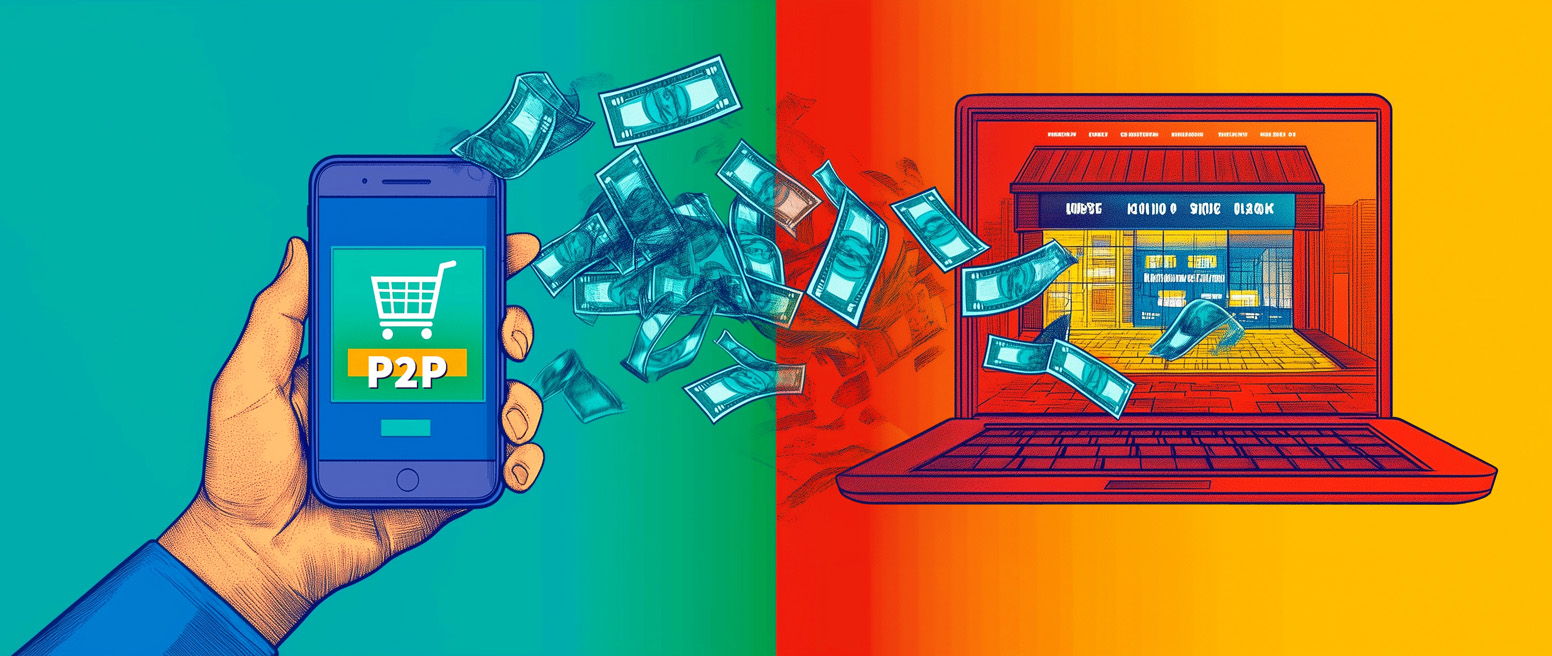FedNow is Active: Here are 5 Shifts in the Merchant Space You Should Anticipate
A fresh payment initiative has just landed in finance.
The Federal Reserve has unveiled a new instant payment service, called FedNow. The platform is ready to expedite transactions whenever needed. Unlike popular consumer-focused platforms like Venmo or Zelle, this system depends on direct involvement of banks and other institutions.
FedNow will be the US central bank's premier real-time payment platform. It’s poised to revolutionize the way businesses and individuals manage payments. Yet, as with any new offering, its reception has been mixed. Not all parties are eager to jump on board.
So, what is FedNow? What should you know about this new platform for instant payments in the US market?
Recommended reading
- What is EMV Bypass Cloning? Are Chip Cards Still Secure?
- Terminal ID Number (TID): What is it? What Does it Do?
- Dispute Apple Pay Transaction: How Does The Process Work?
- What is PSD2? How it Impacts Banks, Businesses & Consumers
- P2P Payment Use in eCommerce Jumps 66% in 2024
- Visa+: Get the Most Out of Digital Wallets With This Tool
What is FedNow?
- FedNow
FedNow is an instant payments platform devised by the US Federal Reserve. It allows users of participating banks and credit unions to transmit and settle funds in mere seconds, rather than days.
[noun]/fed • nau/Current online transfers through the Automated Clearing House (ACH) Network, which operate in batch mode, often take one to three business days to complete. With FedNow, no longer will transactions be bound by conventional banking hours or stalled over weekends and holidays. They can be settled instantly.
FedNow is equipped to facilitate a wide array of transaction types:
- Transactions between individuals (P2P)
- Payments from consumers to businesses (C2B)
- Payments from consumers to government entities (C2G)
- Payments from government entities to consumers (G2C)
- Payments from businesses to consumers (B2C)
- Transactions between businesses (B2B)
- Payments from businesses to government entities (B2G)
- Transfers between a person's own accounts (A2A)
FedNow is open to all banks and credit unions, but participation is optional. As Fed Chair Jerome Powell states, "FedNow will empower all U.S. banks — no matter their size — to deliver real-time payments and immediate fund availability to their customers."
Consumers, businesses, and non-bank payment service providers cannot directly access FedNow. However, they can connect with the service via a participating financial institution. This also means that digital-first banks and payment aggregators will need to partner with a participanting bank to use the service.
FedNow vs. Conventional Payments: What's the Difference?
FedNow reinvents the traditional ACH payments model by enabling instant transactions.
In the Fed’s terminology, banking transactions usually involve two crucial steps: clearing and settlement. FedNow aims to accomplish these tasks within seconds. An “instant” payment, as defined by the Federal Reserve, lets the recipient gain complete access to the transferred funds seconds after initiating the payment.
As for cost, FedNow will levy fees on participating institutions, much like other Federal Reserve services. It remains to be seen whether these costs will trickle down to customers, but there is the potential for consumer cost savings here.
Regarding transaction limits, the Federal Reserve has set a cap of $500,000 per transfer. There is also a default limit of $100,000 for a financial institution, which can be adjusted up or down.
At first, FedNow will only handle domestic payments between US financial institutions. For international transactions or money transfer firms, wire transfers or multi-currency accounts are still advisable.
Consumer-Focused Functionality
The FedNow system could potentially lower payment costs for consumers and businesses due to increased competition in the payments industry.
Users can expect access to affordable and quick payment options, thereby enhancing cash flow management efficiency. This will particularly benefit small businesses, as it allows them to reduce payment delays and lower operational costs linked to payment handling.
Here's a deeper dive into what FedNow is set to offer:
Seamless Functionality
This system is primed to function ceaselessly, including on weekends and holidays. This underscores the need for financial institutions to proactively manage their Federal Reserve account balances, even during bank holidays.Credit Push Transactions
Acting on a "credit push" model, FedNow allows institutions to dispatch funds to other entities, but doesn't permit fund retraction. The service can be leveraged to execute a payment, request reversal of a payment, or solicit the dispatch of a payment.Seek Additional Information
FedNow can be employed to obtain supplementary information about a payment. Institutions may also request a reversal of a payment, or schedule a payment dispatch on a future date.Dollar Value Limits
A global limit will be set on the transaction dollar amount. However, institutions are empowered to impose lower limits at their discretion.Reporting Features
Reporting features offered by FedNow include an account balance overview, comprehensive account activity details, and a total summary of account activities.With payments settling throughout the calendar year, there is an imperative need for financial institutions to actively manage Federal Reserve account balances. Considering that FedWire Funds won't be accessible 24/7, FedNow offers facilities for liquidity management during those hours when wire transfers are inaccessible.
In terms of operational mechanisms, FedNow uses existing master accounts that participating banks hold with the Federal Reserve. In contrast, the Real-Time Payments (RTP) pathway requires participants to maintain a distinct, pooled liquidity account.
In the RTP system, the settlement between banks takes place before the Receiving Depository Financial Institution (or RDFI) verifies the status and existence of the recipient's account. Contrastingly, in the FedNow system, the process of interbank settlement occurs only after the RDFI has confirmed the information regarding the recipient's account.
5 FedNow Benefits for Merchants
Since it’s intended to be a versatile and unbiased platform, FedNow facilitates a wide array of instant payments. This progressive service may also realize some of the projected advantages of the central bank digital currency, another potential novel financial innovation.
FedNow is projected to redefine the landscape of the payment industry and play a pivotal role in shaping the future of the US payment system. Here’s how the new platform could ultimately benefit merchants:
#1. Enhanced Efficiency
The service offers improved adaptability and control over cash flow, resulting in more streamlined business operations.#2. Faster Salary Payments
Individuals can enjoy expedited access to their earnings, reducing the usual payroll delay. In turn, this also minimizes overhead for the merchant as well.#3. Reduced Transaction Costs
FedNow promises to lower processing expenses for a range of transaction types. It will cut down on redundancies in the current payment process.#4. Advancing Financial Inclusion
The system promotes broader financial engagement by opening the door for smaller businesses and community banks to participate in real-time payment services.#5. Spurring Innovation
The new platform is set to be a fertile ground for fintech firms and other innovators, facilitating further advancements in the payments industry.A standout advantage of FedNow rests in its association with the expansive network of the Federal Reserve. Contrasting with RTP, FedNow will extend support to smaller, community-centric banks across the nation. Therefore, FedNow is expected to benefit these local financial institutions and their clientele, as well as major institutions.
Potential Pitfalls of FedNow
Since transactions are only feasible between banks participating in FedNow, widespread adoption might take considerable time. Financial establishments will have to connect with this fresh network, and customers may have to acclimate to the novel payment procedure.
Security could pose another hurdle. Diverging from conventional, slower payment methods, FedNow doesn't offer any form of payment reversal or chargeback functionality. While this could prove beneficial, it also exposes potential avenues for misuse.
FedNow also needs to operate harmoniously with other payment systems, such as the ACH network and RTP. The extent to which FedNow will cohesively integrate with other payment systems remains uncertain, as seamless interoperability across diverse payment systems would provide advantages to businesses and banks.
Lastly, financial institutions will have to ensure their systems are configured to collaborate with the new network. They may also confront technical challenges linked to integrating with other payment systems. Any technical glitches that occur could cause delays and disruptions in the payment process.
Additional Challenges Ahead for Banks?
Instant payments also bring several challenges for financial institutions. For example, when a payment initiated on a Monday reaches the recipient's account by Thursday, the banks, not the customers, gain from the interim interest.
Customers have the ability to instantly transfer large amounts, even when the bank is closed. This facility could significantly accelerate the rate of deposit withdrawals. In other words, “round-the-clock” payments can exacerbate the risk of bank runs.
Unlike consumer-focused platforms like Venmo or Zelle, FedNow operates in the background as an infrastructure framework. To compete with countries like India that have robust instant payment systems, US financial services companies may need to invest heavily in upgrading their applications and infrastructure to integrate this new technology.
Preparing for FedNow: 5 Tips for Merchants
When navigating the evolving payments landscape, it's crucial to consider emerging technologies and their impact on your operations. We recommend the following practices for merchants to prep for a FedNow-enabled future:
#1 | Reassess Current Payment Systems
Evaluate your company's payment mechanisms, focusing on their speed, cost, and security. Consider how FedNow could potentially enhance — or detract from — these elements.
#2 | Revisit Payment Procedures
Delve into your current payment processes, pinpointing potential areas that could be improved or streamlined via FedNow. Concentrate on minimizing manual operations and automating payment reconciliation.
#3 | Engage Your Financial Institution
Connect with your financial institution to gather more information about their strategies for FedNow integration. Inquire about their roll-out timeline and what preparatory steps your business should take. As an example, First Business Bank intends to commence as a receive-only bank in 2023, gradually transitioning to full FedNow implementation in 2024.
#4 | Modernize Accounting & Financial Systems
Certify that your financial and accounting systems are contemporary and compatible with FedNow. This may necessitate software upgrades, which are beneficial in mitigating the risk of fraud, among other alterations.
#5 | Weigh Pros & Cons
Outline the potential advantages and hazards of employing FedNow for your business. Despite the perks, such as swift payments and reduced costs, potential risks also exist. Your current business cash flow cycle may depend on slower cash outflows, and instantaneous payments could drastically influence your operations.
The Bottom Line
The payments industry should moderate expectations for the immediate impact of FedNow. Initially, only 57 organizations will support the system, and many will operate in a "receive only" mode, allowing customers to receive (but not send) money using the service.
In countries like India or Brazil, the central bank mandates the use of the official instant-payments system. This is unlike the US, where FedNow's adoption is entirely voluntary. However, with the Federal Reserve's push for its uptake, it's reasonable to predict a growth in instant payments' popularity in the coming years.
Ultimately, you should stay tuned for more updates as this exciting situation evolves. Preemptive planning and comprehensive training will equip you and your team to sidestep potential risks associated with FedNow, including inadvertent payments to fraudsters.














